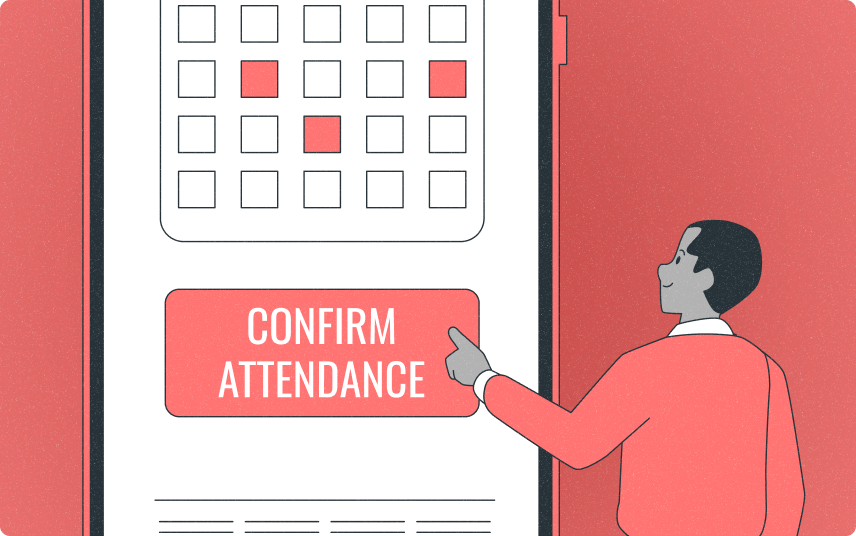Attendance Point System: A Strategy for Managing Employee Absences

Managing employee attendance is a critical aspect of maintaining productivity and ensuring smooth operations in any organization. Frequent or unexplained absences can disrupt workflows, strain resources, and affect team morale. To address these challenges, many companies implement an attendance point system—a structured approach to tracking and managing employee absences.
An attendance point system assigns points to different types of absences or tardiness, and as employees accumulate points, they may face disciplinary actions ranging from warnings to termination. This system aims to provide a clear, consistent, and fair way to manage attendance issues while encouraging employees to adhere to attendance policies.
In this article, we’ll explore the concept of an attendance point system, its benefits and drawbacks, how to implement it effectively, and tips for ensuring it works well within your organization. We’ll also address common questions about attendance point systems in the FAQ section.
Introduction
Employee attendance is a crucial factor in the success of any organization. When employees regularly miss work, arrive late, or leave early, it can create significant disruptions, lower productivity, and lead to increased costs for the company. To mitigate these issues, many organizations turn to an attendance point system as a way to manage and control employee absences.
An attendance point system is a structured framework that assigns points to various types of absences or tardiness. The points are then tracked over time, and as employees accumulate points, they may face escalating disciplinary measures. This system is designed to be transparent, fair, and consistent, ensuring that all employees are held to the same standards and are aware of the consequences of absenteeism.
In this article, we’ll delve into the details of how an attendance point system works, its advantages and potential pitfalls, and how to implement it effectively in your organization.
What Is an Attendance Point System?
An attendance point system is a method used by employers to track and manage employee attendance by assigning points to various attendance infractions. These infractions can include unexcused absences, tardiness, leaving early, or any other behaviors that deviate from the company’s attendance policies. Points are accumulated over time, and as an employee’s point total increases, they may face different levels of disciplinary action.
How Does It Work?
The basic premise of an attendance point system is to assign a specific number of points to different types of attendance issues. For example:
- Unexcused Absence: 3 points
- Tardiness: 1 point
- Leaving Early Without Permission: 2 points
- No Call/No Show: 5 points
Points are tracked over a specified period, often 6 to 12 months. If an employee reaches a certain threshold of points, they may be subject to disciplinary actions such as:
- Verbal Warning: After accumulating 5 points
- Written Warning: After accumulating 8 points
- Suspension: After accumulating 10 points
- Termination: After accumulating 12 points
The specific points assigned and the disciplinary actions can vary based on the organization’s policies, but the general idea is to create a clear and predictable system that employees can understand and follow.

Benefits of an Attendance Point System
Get more out of your business
Get the best employee engagement content every week via mailing list

Challenges and Drawbacks of an Attendance Point System
While an attendance point system can be an effective tool for managing employee absences, it’s not without its challenges and potential drawbacks. Some of the key issues to consider include:
1. Lack of Flexibility
An attendance point system may be seen as rigid and inflexible, especially in situations where employees have legitimate reasons for their absences or tardiness. For example, employees with chronic health conditions, caregiving responsibilities, or other personal issues may find it difficult to adhere to strict attendance policies. In such cases, the system could be perceived as unfair or punitive.
2. Potential for Reduced Employee Morale
If not implemented carefully, an attendance point system can lead to decreased employee morale. Employees may feel that they are being overly monitored or punished for circumstances beyond their control. This can lead to resentment, disengagement, and even higher turnover rates.
3. Risk of Legal Issues
Employers must be cautious to ensure that their attendance point system does not violate labor laws or employee rights. For example, penalizing employees for absences related to legally protected activities, such as taking leave under the Family and Medical Leave Act (FMLA), can result in legal repercussions.
4. Focus on Quantity Over Quality
An attendance point system focuses primarily on the quantity of absences rather than the quality of an employee’s work. This can lead to situations where employees are physically present but not fully engaged or productive, simply to avoid accumulating points.
5. Potential for Misuse
If not properly managed, an attendance point system can be misused by managers to unfairly target or discipline certain employees. It’s essential to ensure that the system is applied consistently and without bias.

Implementing an Attendance Point System
To successfully implement an attendance point system, it’s important to follow a structured and thoughtful approach. Here are the key steps to consider:
1. Define Clear Attendance Policies
Before implementing an attendance point system, it’s crucial to have clear and well-defined attendance policies in place. These policies should outline the expectations for attendance, including what constitutes an unexcused absence, tardiness, and other attendance-related behaviors. The policies should also specify the point values assigned to each infraction and the disciplinary actions associated with different point thresholds.
2. Communicate with Employees
Effective communication is key to the success of an attendance point system. Employees should be informed about the system well in advance of its implementation, and they should have the opportunity to ask questions and provide feedback. It’s important to ensure that all employees fully understand how the system works and the consequences of accumulating points.
3. Provide Training for Managers
Managers play a critical role in the implementation and enforcement of the attendance point system. It’s essential to provide training to managers on how to apply the system consistently and fairly, how to document attendance issues, and how to address employee concerns. Managers should also be trained on how to handle exceptions and special cases, such as absences related to medical conditions or legally protected leave.
4. Monitor and Adjust the System
Once the attendance point system is in place, it’s important to monitor its effectiveness and make adjustments as needed. Regularly review the system’s impact on attendance, productivity, and employee morale. Be open to feedback from employees and managers, and be willing to make changes to the system if necessary to ensure that it remains fair and effective.
5. Consider Legal Compliance
Ensure that your attendance point system complies with all applicable labor laws and regulations. This includes understanding the legal requirements related to protected leave, disability accommodations, and other employee rights. Consult with legal counsel if necessary to ensure that your system is legally sound.

Best Practices for Managing Employee Absences
In addition to implementing an attendance point system, there are several best practices that can help you manage employee absences more effectively:
1. Offer Flexible Work Arrangements
Providing flexible work arrangements, such as remote work options or flexible hours, can help reduce absenteeism by allowing employees to balance their work and personal responsibilities more effectively. This can lead to increased job satisfaction and lower absenteeism rates.
2. Promote a Positive Work Environment
A positive work environment can have a significant impact on employee attendance. When employees feel valued, supported, and engaged, they are more likely to show up for work consistently. Encourage open communication, recognize employee contributions, and foster a culture of trust and respect.
3. Provide Employee Support Programs
Offering employee support programs, such as wellness initiatives, employee assistance programs (EAPs), and mental health resources, can help employees manage personal challenges that may affect their attendance. Providing access to these resources can reduce the likelihood of absenteeism and improve overall employee well-being.
4. Address Attendance Issues Early
Addressing attendance issues early and consistently is essential for preventing them from escalating. When an employee begins to accumulate points, managers should have a conversation with them to understand the underlying reasons for their absences and offer support or accommodations if needed.
5. Recognize and Reward Good Attendance
Recognizing and rewarding employees who maintain good attendance can be a powerful motivator. Consider implementing an attendance recognition program that acknowledges employees with excellent attendance records. Rewards could include bonuses, additional time off, or public recognition.
Conclusion
An attendance point system can be an effective tool for managing employee absences, providing a structured and transparent way to track and address attendance issues. However, it’s important to implement the system carefully, with consideration for its potential impact on employee morale, legal compliance, and overall workplace culture.
By following best practices for managing employee absences and maintaining open communication with employees, you can create a fair and effective attendance management strategy that supports both the needs of your organization and the well-being of your employees.
— The Monitask Team
Frequently Asked Questions
What are the benefits of an attendance point system?
Benefits of an attendance point system include consistency and fairness in managing attendance issues, transparency for employees, motivation to improve attendance, and objective measurement of attendance behaviors.
What are the potential drawbacks of an attendance point system?
Potential drawbacks include lack of flexibility, potential for reduced employee morale, risk of legal issues, focus on quantity over quality, and the potential for misuse by managers.
How can I ensure that an attendance point system is fair and effective?
To ensure fairness and effectiveness, clearly define attendance policies, communicate the system to employees, provide training for managers, monitor and adjust the system as needed, and ensure legal compliance.


